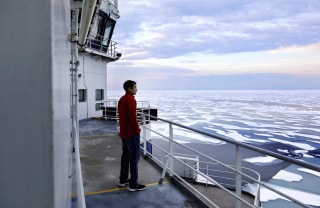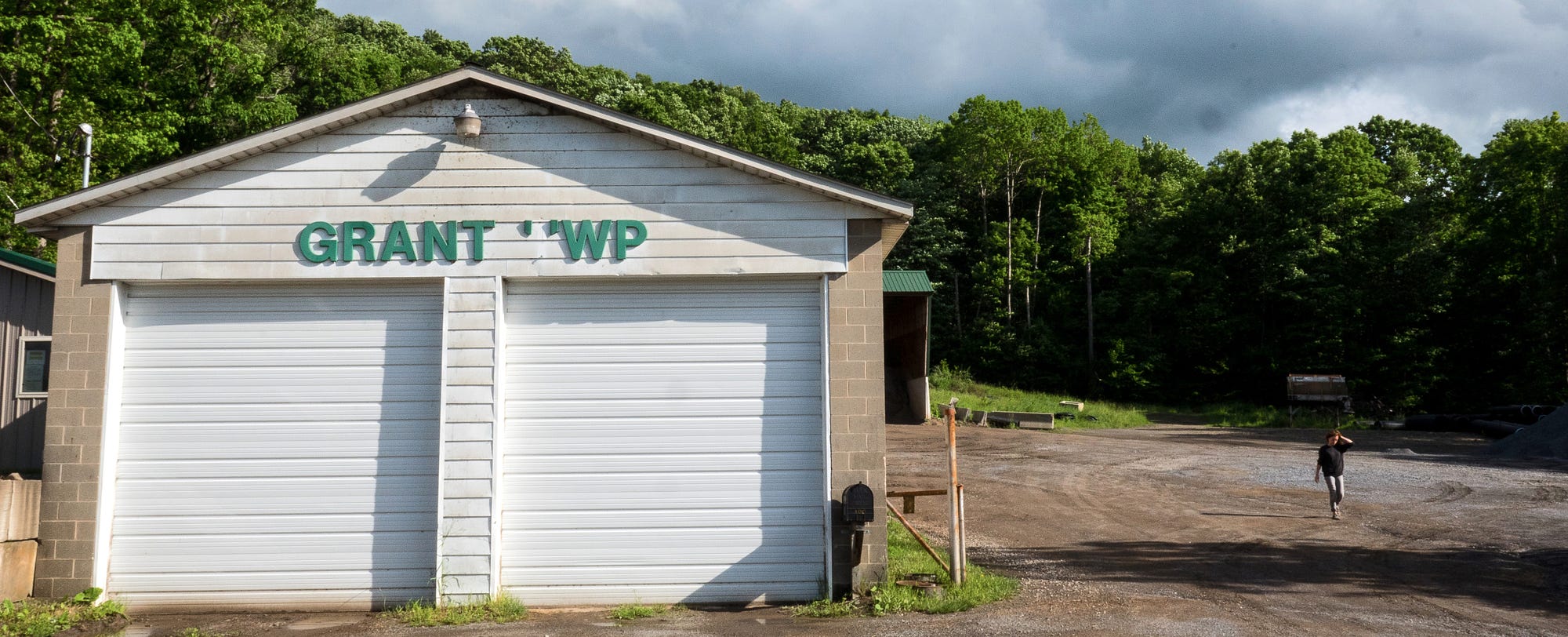Winnipeg Free Press
Icebreaker sets mark for earliest Northwest Passage transit
By: Frank Jordans, The Associated Press July 29, 2017
NUUK, Greenland – After 24 days at sea and a journey spanning more than 10,000 kilometres (6,214 miles), the Finnish icebreaker MSV Nordica has set a new record for the earliest transit of the fabled Northwest Passage.
The once-forbidding route through the Arctic, linking the Pacific and the Atlantic oceans, has been opening up sooner and for a longer period each summer due to climate change. Sea ice that foiled famous explorers and blocked the passage to all but the hardiest ships has slowly been melting away in one of the most visible effects of man-made global warming.

In this Saturday, July 22, 2017 photo, Canadian Coast Guard Capt. Victor Gronmyr looks out over the ice covering the Victoria Strait as the Finnish icebreaker MSV Nordica traverses the Northwest Passage through the Canadian Arctic Archipelago. (AP Photo/David Goldman)

Second officer Juha Tuomi looks out from Finnish icebreaker MSV Nordica as it sails into floating sea ice on the Victoria Strait while traversing the Northwest Passage in the Canadian Arctic Archipelago, Friday, July 21, 2017. Sea ice plays an important role in the global climate system by cooling the surrounding water and air. (AP Photo/David Goldman)

FILE – In this July 16, 2017 file photo, Chief engineer Jukka-Pekka Silander watches from the bow of the the Finnish icebreaker MSV Nordica as it sails into floating sea ice on the Beaufort Sea off the coast of Alaska while traversing the Arctic’s Northwest Passage. After 24 days at sea and a journey spanning more than 10,000 kilometers (6,214 miles), the Finnish icebreaker MSV Nordica has set a new record for the earliest transit of the fabled Northwest Passage. The once-forbidding route through the Arctic, linking the Pacific and the Atlantic oceans, has been opening up sooner and for a longer period each summer due to climate change. Sea ice that foiled famous explorers and blocked the passage to all but the hardiest ships has slowly been melting away in one of the most visible effects of man-made global warming. (AP Photo/David Goldman, File)
Records kept by Canada’s Department of Fisheries and Oceans show that the previous earliest passage of the season happened in 2008, when the Canadian Coast Guard ship Louis L. St-Laurent left St. John’s in Newfoundland on July 5 and arrived in the Beaufort Sea off Point Barrow on July 30.
The Nordica, with a team of researchers and Associated Press journalists on board, completed a longer transit in less time — albeit in the opposite direction — setting off from Vancouver on July 5 and reaching Nuuk, the capital of Greenland, on July 29.
While the icebreaker encountered Chinese cargo vessels, Alaskan fishing boats and a German cruise ship in the Pacific, upon entering the Canadian Archipelago, the Nordica traveled alone. Radar indicated the presence of the U.S. Coast Guard cutter Sherman near Point Barrow; along the coast an occasional collection of houses revealed evidence of human settlement in the far north.
For the most part, the ship’s only companions were Arctic sea birds, seals and the occasional whale, until two-thirds of the way through the voyage, as Nordica was plowing through sea ice in Victoria Strait, a crew member sighted a polar bear.
These animals have come to symbolize the threat posed to Arctic wildlife by climate change because the sea ice they depend on for hunting is disappearing a bit more each year. Scientists predict the Northwest Passage will be largely ice free in the summer by 2050 if current levels of warming continue.
For now, the passage remains a challenge for conventional ships and efforts are being made to prevent frozen waterways that the local Inuit population depends on for travel from being opened up. Yet tourism and other forms of economic development are already under way.
As Nordica sailed through Baffin Bay, the far corner of the North Atlantic that separates Canada and Greenland, it passed cargo ships lining up in the distance. They were preparing to pick up iron ore from a mine on Baffin Island that’s expected to operate for decades to come.
On July 26, 1845, an expedition to find the Northwest Passage led by British explorer John Franklin was last sighted off Baffin Island. The expedition never made it. Trapped by sea ice, Franklin and his men perished from cold, illness and starvation. Their two ships were found in 2014 and 2016, not far from where Nordica sighted its first polar bear.
Follow the team of AP journalists who traveled through the Arctic Circle’s fabled Northwest Passage. You can find their posts here: https://www.apnews.com/tag/NewArctic
You can comment on most stories on winnipegfreepress.com. You can also agree or disagree with other comments. All you need to do is be a Winnipeg Free Press print or e-edition subscriber to join the conversation and give your feedback.




 Image source: Getty Images.
Image source: Getty Images. Image source: Getty Images.
Image source: Getty Images.
 iStock/VelhoJunior
iStock/VelhoJunior